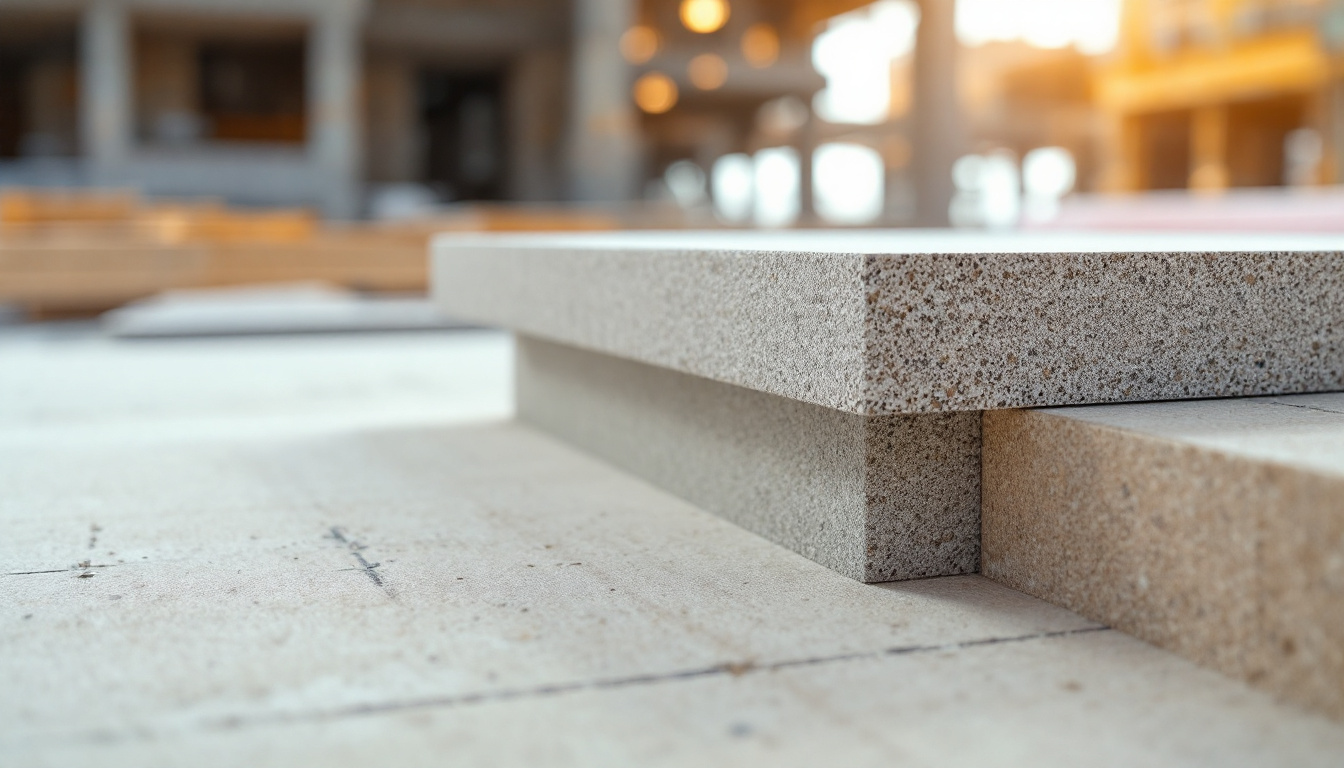Introduction to High-Density Overlay (HDO) Formwork Plywood
High-Density Overlay (HDO) formwork plywood is a specialised material designed for use in concrete construction. It is engineered to provide a superior finish and durability compared to traditional plywood options. The unique properties of HDO plywood make it an increasingly popular choice among contractors and builders striving for excellence in their concrete projects.
In the concrete form work industry, HDO formwork plywood is gaining popularity due to its superior finish and durability.
This article will explore the characteristics of HDO formwork plywood, its advantages in concrete finishing, and how it contributes to overall project efficiency. By understanding these aspects, construction professionals can make informed decisions that enhance the quality of their work.
One of the standout features of HDO plywood is its surface treatment, which involves a high-density overlay that significantly increases its resistance to moisture and wear. This makes it particularly suitable for repeated use in formwork applications, as it can withstand the rigours of concrete pouring and stripping without succumbing to the typical damage associated with standard plywood. Furthermore, the smooth finish of HDO plywood allows for a cleaner and more precise concrete surface, reducing the need for extensive finishing work and thereby saving both time and resources on the job site.
Additionally, HDO formwork plywood is available in various thicknesses and sizes, allowing for versatility in different construction scenarios. Its lightweight nature, combined with its strength, facilitates easier handling and installation, which can significantly speed up the construction process. Moreover, the environmentally friendly manufacturing process of HDO plywood, often sourced from sustainably managed forests, aligns with the growing demand for eco-conscious building materials. This not only helps in reducing the carbon footprint of construction projects but also appeals to clients who prioritise sustainability in their building practices.
Understanding HDO Formwork Plywood
Composition and Manufacturing Process
HDO plywood is made from multiple layers of thin wood veneers, similar to laminated veneer lumber, that are bonded together with adhesives under heat and pressure. The surface of the plywood is coated with a high-density overlay, which is a resin-impregnated paper that provides a smooth, durable finish. This overlay not only enhances the aesthetic appeal of the concrete but also increases the plywood’s resistance to moisture and wear.

The manufacturing process of HDO plywood involves precise control of both the adhesive and the overlay application. Moisture protection is a critical aspect, with treatments and coatings applied to enhance the plywood’s resistance to moisture. This ensures that the final product meets stringent quality standards, making it suitable for demanding construction environments. The result is a formwork material that is both robust and reliable, capable of withstanding the rigours of concrete pouring and curing.
Key Properties of HDO Plywood
One of the standout features of HDO formwork plywood is its exceptional surface quality. The smooth finish achieved through the high-density overlay significantly reduces the likelihood of surface imperfections in the concrete. This is crucial for projects where aesthetics are paramount, such as architectural structures and decorative concrete applications. Some HDO plywood products are painted bright orange for easy identification on construction sites.
Additionally, HDO plywood is known for its moisture resistance. This property is vital in preventing warping or swelling, which can compromise the integrity of the formwork and ultimately affect the concrete finish. The durability of HDO plywood also extends its lifespan, making it a cost-effective choice for multiple uses across various projects. The colour coded end section feature helps in identifying different lengths of the timber, enhancing usability in construction applications.
The Advantages of Using HDO Formwork Plywood: A Strong and Lightweight Solution
Enhanced Concrete Finish Quality for High Rise Commercial Buildings
The primary advantage of using HDO formwork plywood is the improved quality of the concrete finish. The smooth surface of the plywood minimises the transfer of imperfections to the concrete, resulting in a more uniform and aesthetically pleasing appearance. This is particularly important in high-visibility areas where the concrete will be exposed.
Moreover, the consistent texture of HDO plywood allows for better adhesion of concrete, reducing the chances of delamination or surface defects. This leads to a higher-quality end product that meets or exceeds industry standards.
Increased Efficiency on Site
In addition to enhancing finish quality, HDO formwork plywood contributes to increased efficiency on construction sites. Its lightweight nature makes it easier to handle and install, reducing labour costs and time spent on formwork assembly. This is particularly beneficial for large-scale projects where time is of the essence.
The durability of HDO plywood also means that it can be reused multiple times without significant degradation in quality. This not only saves costs but also reduces waste, making it a more sustainable option compared to traditional formwork materials.
Versatility in Structural Concrete Formwork Applications
HDO formwork plywood is versatile and can be used in a variety of concrete applications. From residential buildings to commercial structures, it adapts well to different project requirements. Its ability to withstand harsh conditions, including moisture and temperature fluctuations, makes it suitable for both indoor and outdoor use. Additionally, formwork timber, particularly LVL (Laminated Veneer Lumber), is known for its versatility and compliance in various concrete structural applications.
Furthermore, HDO plywood can be customised to fit specific project needs, whether that involves cutting it to size or applying additional treatments for enhanced performance. This flexibility makes it a preferred choice for contractors looking to achieve specific design outcomes. Structural laminated veneer lumber is another material designed for structural applications, especially in concrete formwork, offering benefits in terms of strength, stability, and moisture control.
Technical Specifications of HDO Formwork Plywood
Understanding the technical specifications of HDO formwork plywood is crucial for construction professionals aiming to achieve optimal results in their projects. HDO formwork plywood is engineered with a phenolic resin overlay, which provides a smooth and durable surface ideal for concrete finishing. This high-density overlay ensures that the plywood can withstand the rigours of concrete formwork applications, making it a reliable choice for various construction scenarios.
HDO formwork plywood is available in multiple thicknesses, including 12mm, 15mm, and 18mm, catering to different structural needs. The plywood is constructed from multiple layers of wood veneers, pressed together under high pressure with a high-density overlay. This composition not only enhances the plywood’s strength but also ensures a consistent and high-quality finish for concrete surfaces.
Meeting the stringent requirements of AS/NZS 4357.0:2005 for structural concrete formwork applications, HDO formwork plywood is suitable for use in high-rise commercial buildings, industrial warehouses, and other demanding structural applications. Its strong and lightweight nature provides a high strength-to-weight ratio, making it easier to handle and install on-site.
Moreover, HDO formwork plywood is resistant to moisture and can withstand corrosive environments, ensuring longevity and durability. This makes it an excellent choice for projects where environmental conditions can be challenging, providing a reliable and efficient solution for concrete formwork.
Comparing HDO Plywood with Other Formwork Materials
HDO vs. Traditional Plywood
When comparing HDO plywood to traditional plywood, the differences are striking. Traditional plywood often lacks the moisture resistance and surface quality that HDO plywood offers. As a result, using traditional plywood can lead to more significant surface imperfections and a higher likelihood of warping. Laminated veneer lumber (LVL) is a superior alternative to traditional plywood due to its enhanced strength and stability, achieved by bonding thin wood veneers.
Additionally, traditional plywood may not withstand repeated use as effectively as HDO plywood. This can lead to increased costs over time, as contractors may need to replace formwork more frequently. In contrast, the longevity and durability of HDO plywood make it a more economical choice in the long run.
HDO vs. Steel Formwork
Steel formwork is another alternative to HDO plywood, but it comes with its own set of challenges. While steel offers superior strength and durability, it is significantly heavier and more cumbersome to handle. This can lead to increased labour costs and longer installation times.
Moreover, steel formwork typically requires more maintenance and can be prone to rust if not properly cared for. In contrast, HDO plywood provides a lightweight, user-friendly option that does not compromise on finish quality, making it a more attractive choice for many contractors.
Formwork LVL Beam Options for Concrete Formwork
Formwork LVL beams are a popular choice in the concrete formwork industry due to their superior strength and lightweight design. These beams are manufactured from multiple layers of thin wood veneers, bonded together with a high-strength adhesive. This process results in a product that offers exceptional load-bearing capacity and resistance to warping and twisting, ensuring safe and reliable performance in various structural applications.
Available in a range of sizes and specifications, including 95 x 47, 95 x 65, and 150 x 77 end sections, formwork LVL beams can be tailored to meet the specific needs of different projects. Their versatility makes them suitable for use in high-rise commercial buildings, industrial warehouses, and other structural concrete formwork applications.
One of the key advantages of formwork LVL beams is their lightweight nature, which simplifies handling and installation on construction sites. Despite their light weight, these beams provide superior strength, making them a strong and lightweight solution for concrete formwork. Additionally, formwork LVL beams are environmentally friendly, as they are made from sustainably sourced wood veneers and manufactured using practices that minimize environmental impact.
Formwork LVL beams can be used in conjunction with other formwork materials, such as HDO formwork plywood, to create a comprehensive and cost-efficient formwork solution. This compatibility allows contractors to leverage the benefits of both materials, ensuring high-quality concrete finishes and efficient project execution.
Best Practices for Using HDO Formwork Plywood
Proper Handling and Storage
When stacking HDO plywood, it is advisable to keep the sheets flat and supported to prevent bending or bowing. Using protective coverings can also shield the plywood from environmental factors that may compromise its quality.
Maintenance, Cleaning, and Moisture Protection
Maintaining HDO formwork plywood is relatively straightforward. After use, it is essential to clean the surface to remove any concrete residue, which can affect its reusability. A gentle wash with water and a mild detergent is usually sufficient to keep the plywood in good condition.
Inspecting the plywood for any signs of damage or wear after each use will help ensure that it remains in optimal condition for future projects. Any minor repairs should be addressed promptly to extend the lifespan of the material.
Conclusion
High-Density Overlay (HDO) formwork plywood represents a significant advancement in concrete construction materials. Its unique properties, including enhanced surface quality, moisture resistance, and versatility, make it an invaluable asset for contractors aiming to achieve superior concrete finishes.
By understanding the advantages of HDO formply and implementing best practices in its handling and maintenance, construction professionals can improve project outcomes and efficiency. As the construction industry continues to evolve, HDO formwork plywood stands out as a reliable choice that meets the demands of modern building practices.

